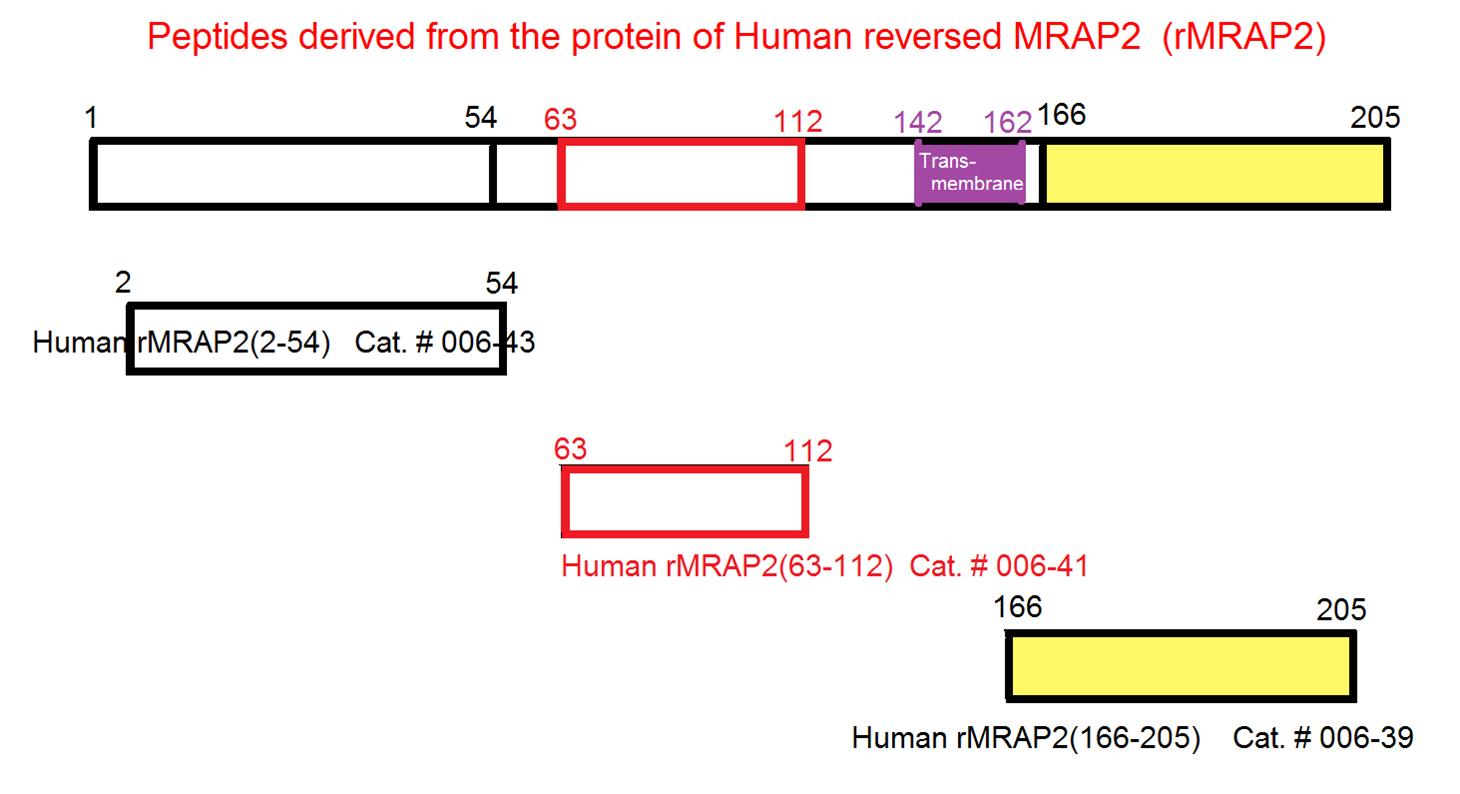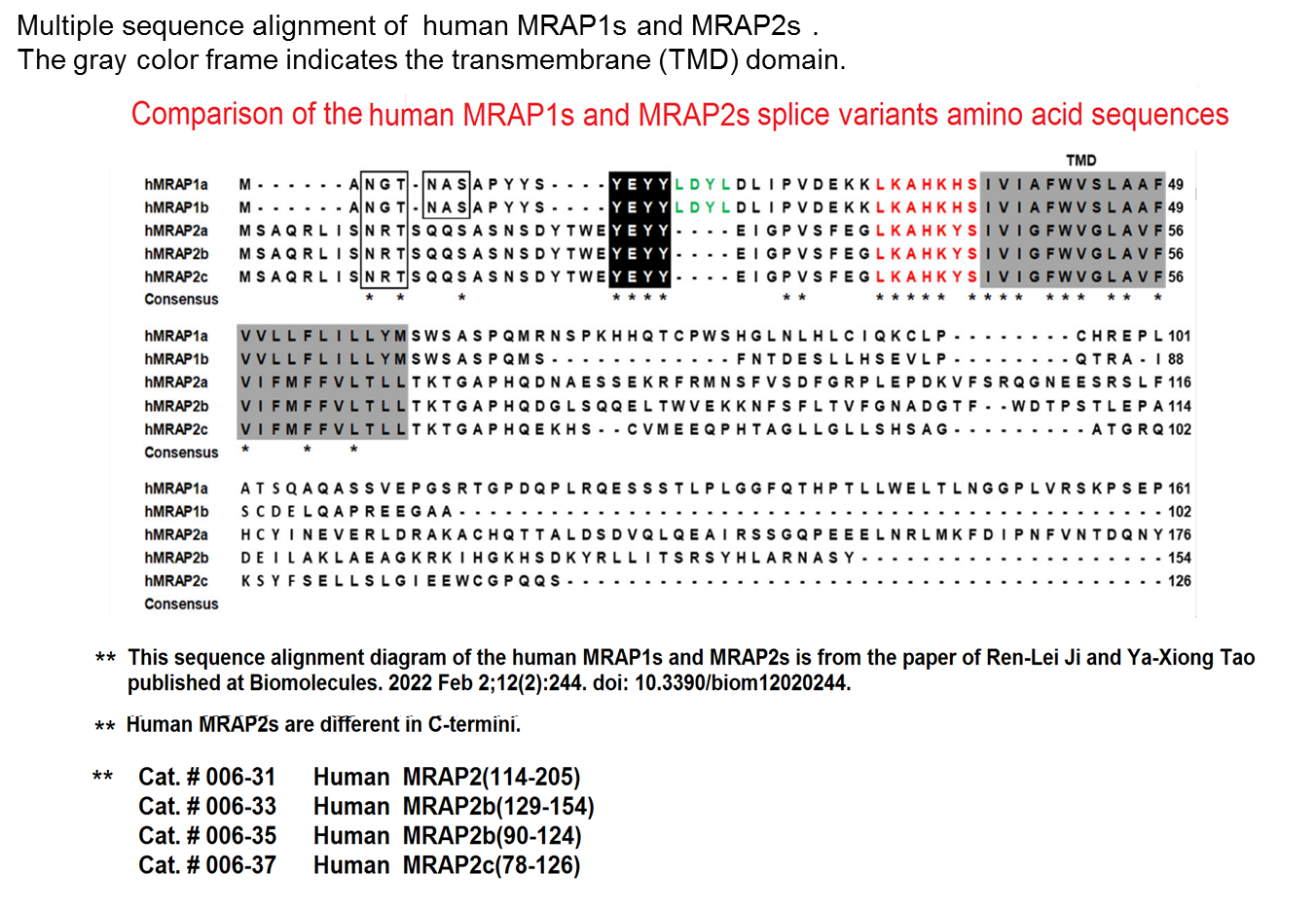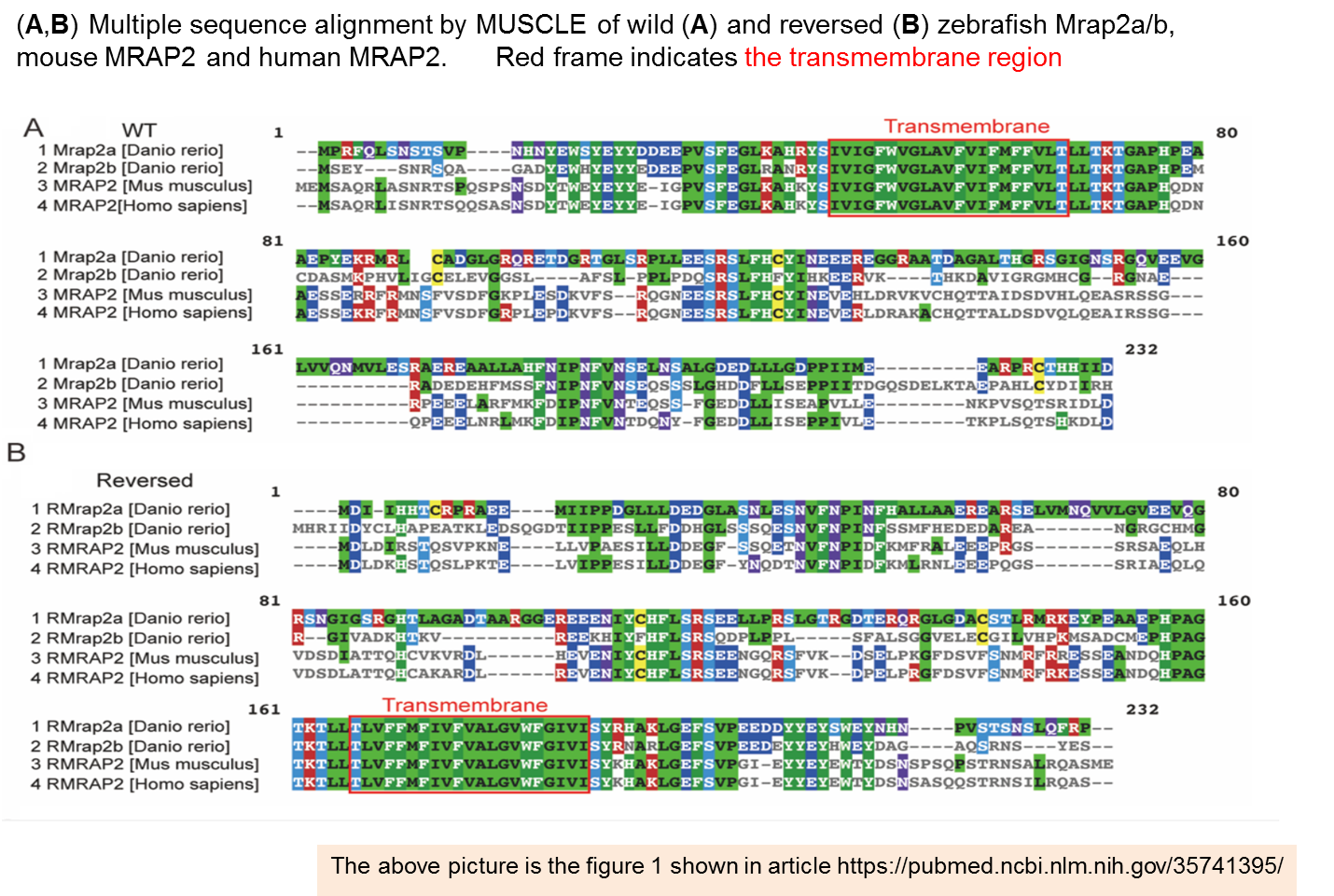


Abstract: As a member of the melanocortin receptor family, melanocortin 4 receptor (MC4R) plays a critical role in regulating energy homeostasis and feeding behavior, and has been proven as a promising therapeutic target for treating severe obesity syndrome. Numerous studies have demonstrated that central MC4R signaling is significantly affected by melanocortin receptor accessory protein 2 (MRAP2) in humans, mice and zebrafish. MRAP2 proteins exist as parallel or antiparallel dimers on the plasma membrane, but the structural insight of dual orientations with the pharmacological profiles has not yet been fully studied. Investigation and optimization of the conformational topology of MRAP2 are critical for the development of transmembrane allosteric modulators to treat MC4R-associated disorders. In this study, we synthesized a brand new single transmembrane protein by reversing wild-type mouse and zebrafish MRAP2 sequences and examined their dimerization, interaction and pharmacological activities on mouse and zebrafish MC4R signaling. We showed that the reversed zebrafish MRAPa exhibited an opposite function on modulating zMC4R signaling and the reversed mouse MRAP2 lost the capability for regulating MC4R trafficking but exhibited a novel function for cAMP cascades, despite proper expression and folding. Taken together, our results provided new biochemical insights on the oligomeric states and membrane orientations of MRAP2 proteins, as well as its pharmacological assistance for modulating MC4R signaling.
Xu J, Wang M, Fu Y, et al. Reversion of mrap2 protein sequence generates a functional novel pharmacological modulator for mc4r signaling. Biology. 2022;11(6):874.
Abstract: The neural melanocortin receptors (MCRs), melanocortin-3 and -4 receptors (MC3R and MC4R), play essential non-redundant roles in the regulation of energy homeostasis. Interaction of neural MCRs and melanocortin-2 receptor accessory proteins (MRAPs, MRAP1 and MRAP2) is suggested to play pivotal roles in MC3R and MC4R signaling. In the present study, we identified two new human (h) MRAP2 splice variants, MRAP2b (465 bp open reading frame) and MRAP2c (381 bp open reading frame). Human MRAP2s are different in C-termini. We investigated the effects of five isoforms of MRAPs, hMRAP1a, hMRAP1b, hMRAP2a, hMRAP2b, and hMRAP2c, on MC3R and MC4R pharmacology. At the hMC3R, hMRAP1a and hMRAP2c increased and hMRAP1b decreased the cell surface expression. hMRAP1a increased affinity to ACTH. Four MRAPs (hMRAP1a, hMRAP1b, hMRAP2a, and hMRAP2c) decreased the maximal responses in response to α-MSH and ACTH. For hMC4R, hMRAP1a, hMRAP2a, and hMRAP2c increased the cell surface expression of hMC4R. Human MRAP1b significantly increased affinity to ACTH while MRAP2a decreased affinity to ACTH. Human MRAP1a increased ACTH potency. MRAPs also affected hMC4R basal activities, with hMRAP1s increasing and hMRAP2s decreasing the basal activities. In summary, the newly identified splicing variants, hMRAP2b and hMRAP2c, could regulate MC3R and MC4R pharmacology. The two MRAP1s and three MRAP2s had differential effects on MC3R and MC4R trafficking, binding, and signaling. These findings led to a better understanding of the regulation of neural MCRs by MRAP1s and MRAP2s.
Ji RL, Tao YX. Regulation of melanocortin-3 and -4 receptors by isoforms of melanocortin-2 receptor accessory protein 1 and 2. Biomolecules. 2022;12(2):244.
| Catalog# | Product | Standard Size | Price |
|---|---|---|---|
| 006-33 | MRAP2b (129-154) (Human) | 100 µg | $214 |
| 006-35 | MRAP2b (90-124)-amide (Human) | 100 µg | $227 |
| 006-37 | MRAP2c (78-126) (Human) | 100 µg | $284 |
| 006-31 | Melanocortin 2 Receptor Accessory Protein (MRAP2) (114-205) (Human) | 100 µg | $571 |
| H-006-31 | Melanocortin 2 Receptor Accessory Protein (MRAP2) (114-205) (Human) - Antibody | 50 µl | $562 |
| RK-006-31 | Melanocortin 2 Receptor Accessory Protein (MRAP2) (114-205) (Human) - RIA Kit | 125 tubes | $926 |
| 006-39 | rMRAP2 (166-205) (Human) | 100 µg | $272 |
| 006-43 | rMRAP2 (2-54) (Human) | 100 µg | $335 |
| 006-41 | rMRAP2 (63-112) (Human) | 100 µg | $323 |
Social Network Confirmation